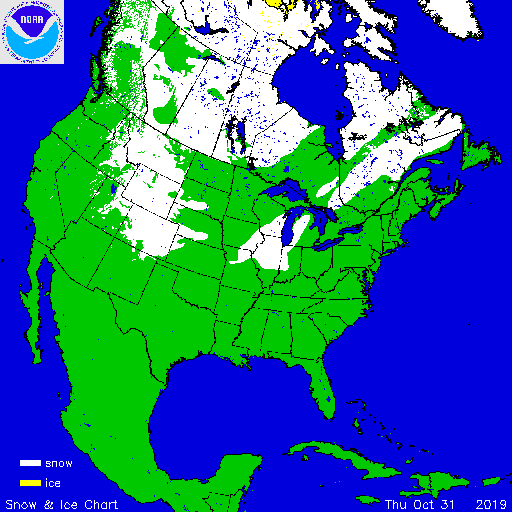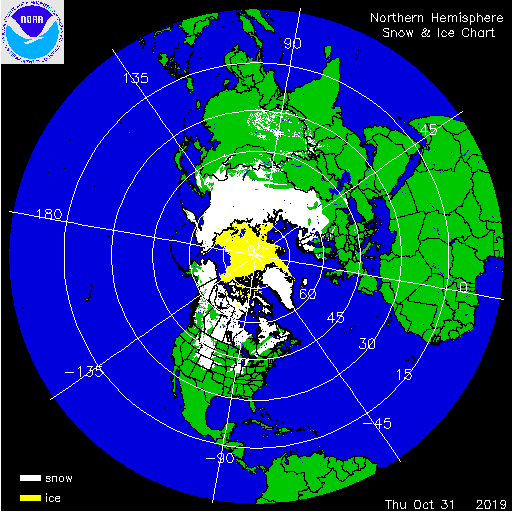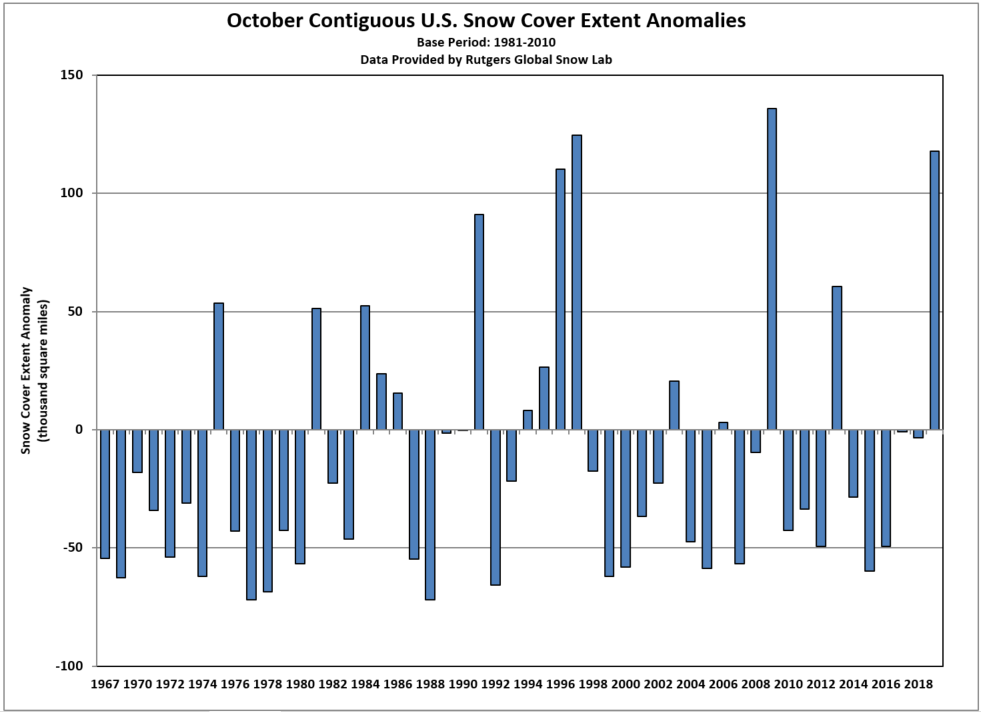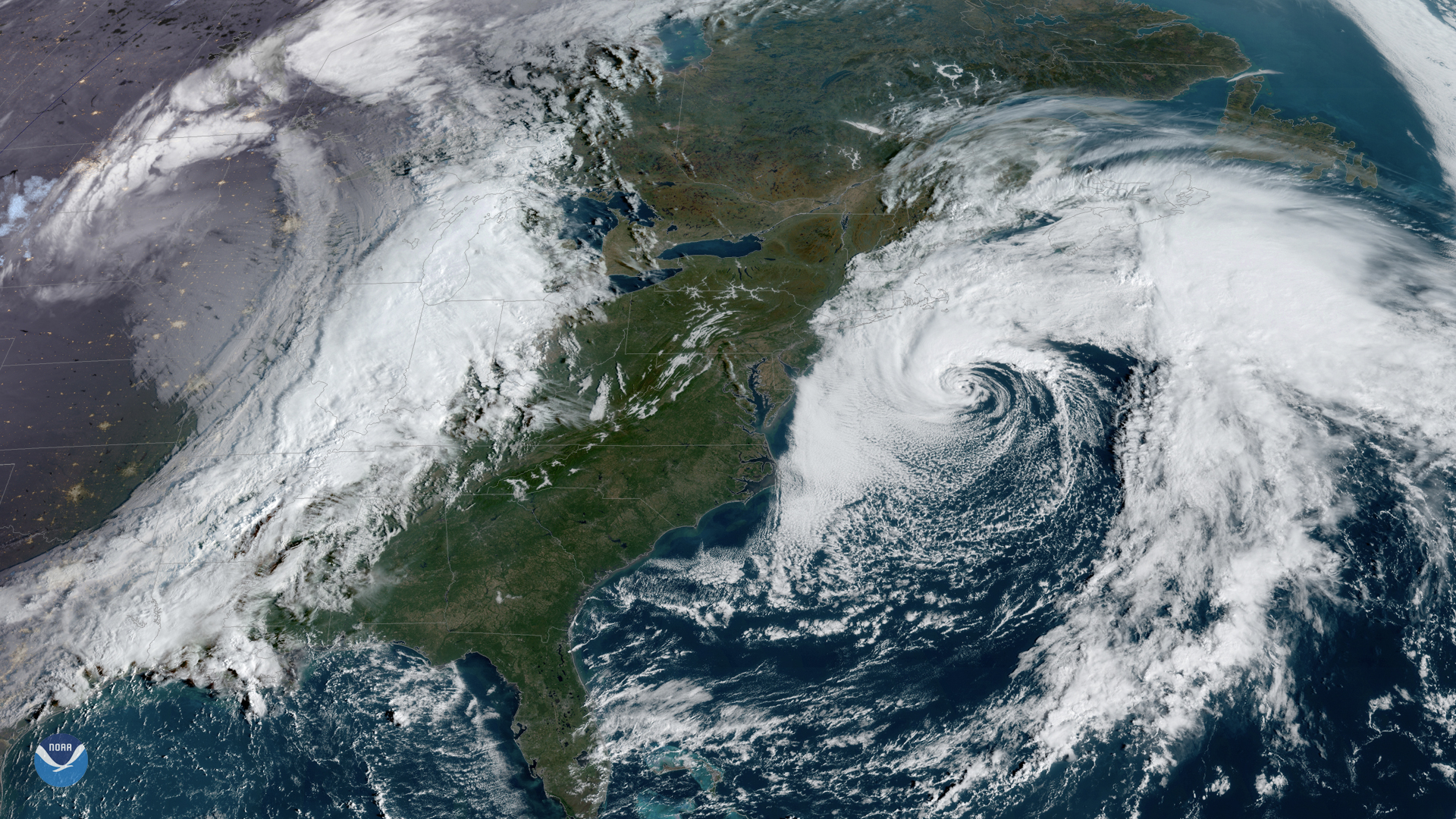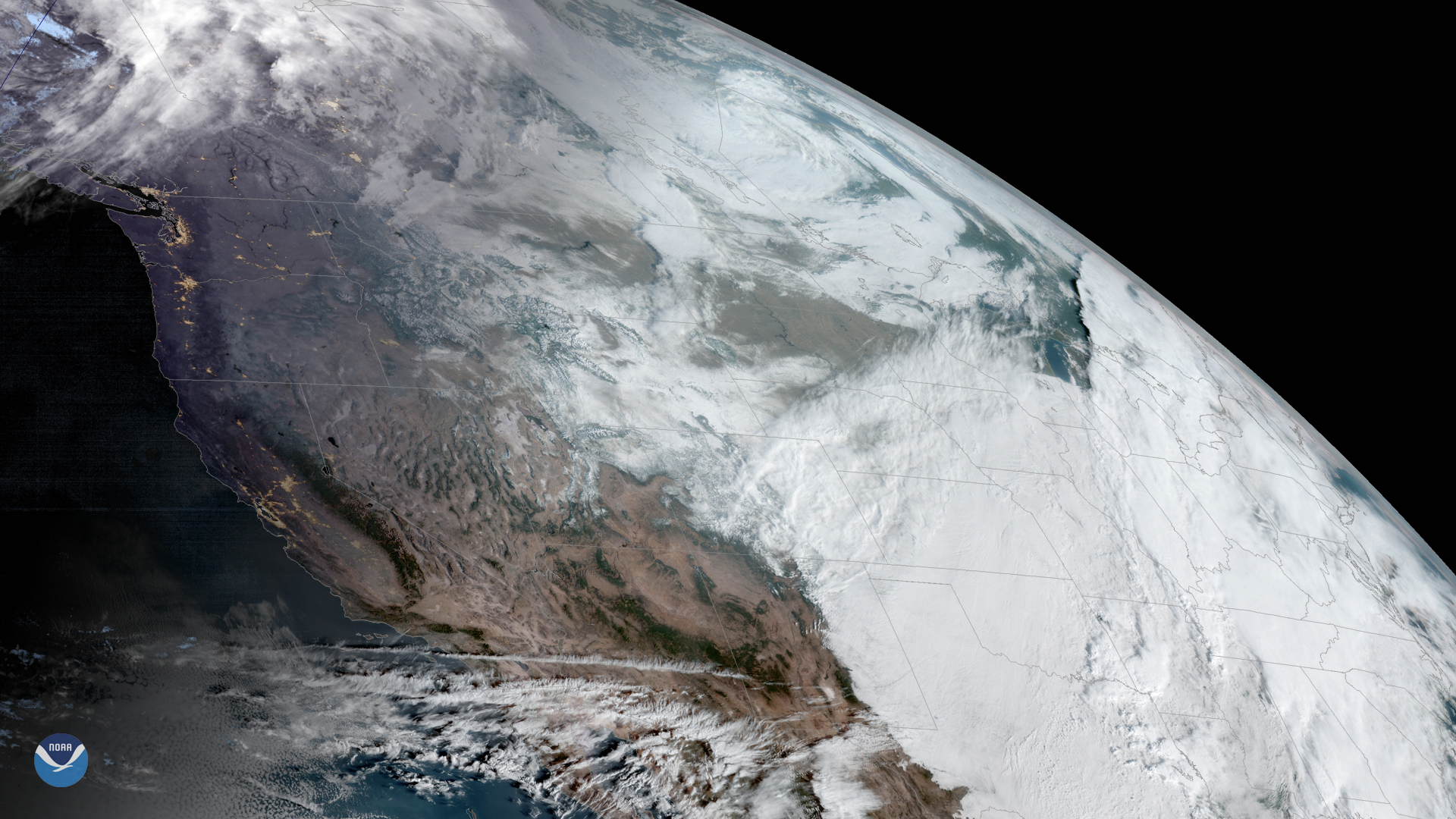It was a snowy beginning to the season for the western mountains and northern Plains states as multiple high-amplitude troughs brought record cold temperatures and accumulating snowfalls to the region over the course of the month. During October 1-2, new snow blanketed parts of the Sierras, Cascades, Bitterroots, and northern Rockies. According to NOAA's National Snow Analysis, the month began with 7.2 percent snow cover across the contiguous U.S. (CONUS) — confined to the aforementioned western locations. October 10-11 brought another trough and associated cold front with more cold air and snow to the Northern Rockies and Plains. In addition to the mountain locations, eastern Wyoming, Montana, as well as North and South Dakota received between one and two feet of snow in spots. One additional end-of-month snowstorm, brought below zero temperatures and accumulating snowfall to the central Rockies and Plains as well as parts of the Midwest. Snowcover across the CONUS peaked for the month on October 31 with 16.9% coverage. Two to three feet of snow depth was present across much of the northern and central Rockies with under a foot of snow blanketing the ground from eastern Colorado to Missouri and up into Iowa, Illinois and Wisconsin.
According to NOAA data analyzed by the Rutgers Global Snow Lab, the October snow cover extent was 189,000 square miles, 117,761 square miles above the 1981-2010 average. This was the third highest value in the 52-year satellite record and the highest value since 2009. Above-average snow cover was observed across much of the Rockies and northern Plains. Below-average snow cover was observed over part of the Sierra Nevada range in California and northern Montana.
Melting of winter and spring mountain snowpack provides a crucial summer water source across much of the western United States. The total annual water budget for agriculture and human use in the mountainous West is highly dependent on the amount of snow melt that will occur in spring and is proportional to the amount of snow on the ground, which can be approximated by a measure of the snow water equivalent (SWE). At the end of October, and marking the beginning of the snow season across the Lower 48, SWE values in excess of 200% of median were observed across a large portion of the northern Cascades, the Bitterroots, and the northern and central Rockies. Below-average SWE values existed across the Sierra Nevada Range as well as parts of the Great Basin.
An early season winter storm brought heavy snow and strong winds to portions of the northern Rockies and Plains. One to two feet of snow fell across parts of Montana and North Dakota on October 11-12 setting a number of early season snow records. On October 13, Great Falls, MT, reported a season-to-date snowfall total of 27 inches, more than double the previous record of 13.1 inches set back in 1957. By the end of the month, Great Falls had more than three feet of snowfall for the season-to-date. Bismark, ND, received 17.1 inches early in October, nearly tripling its previous snowiest start to the season of 5.8 inches in 1898. Several other locations across the Northern Tier also set new records for early-season snowfall accumulations.
A strong trough of low pressure plunged south out of Canada near the end of October bringing bitter cold temperatures and snow to parts of the Rockies, Plains, and Midwest. On October 29, schools and government offices were closed due to the accumulating snow, blistering winds, and plummeting temperatures. Most of the snow from this system fell in the Rocky Mountains, but impacts were also felt across the central Plains, Midwest, and Great Lakes states.
 NOAA's National Centers for Environmental Information
NOAA's National Centers for Environmental Information
